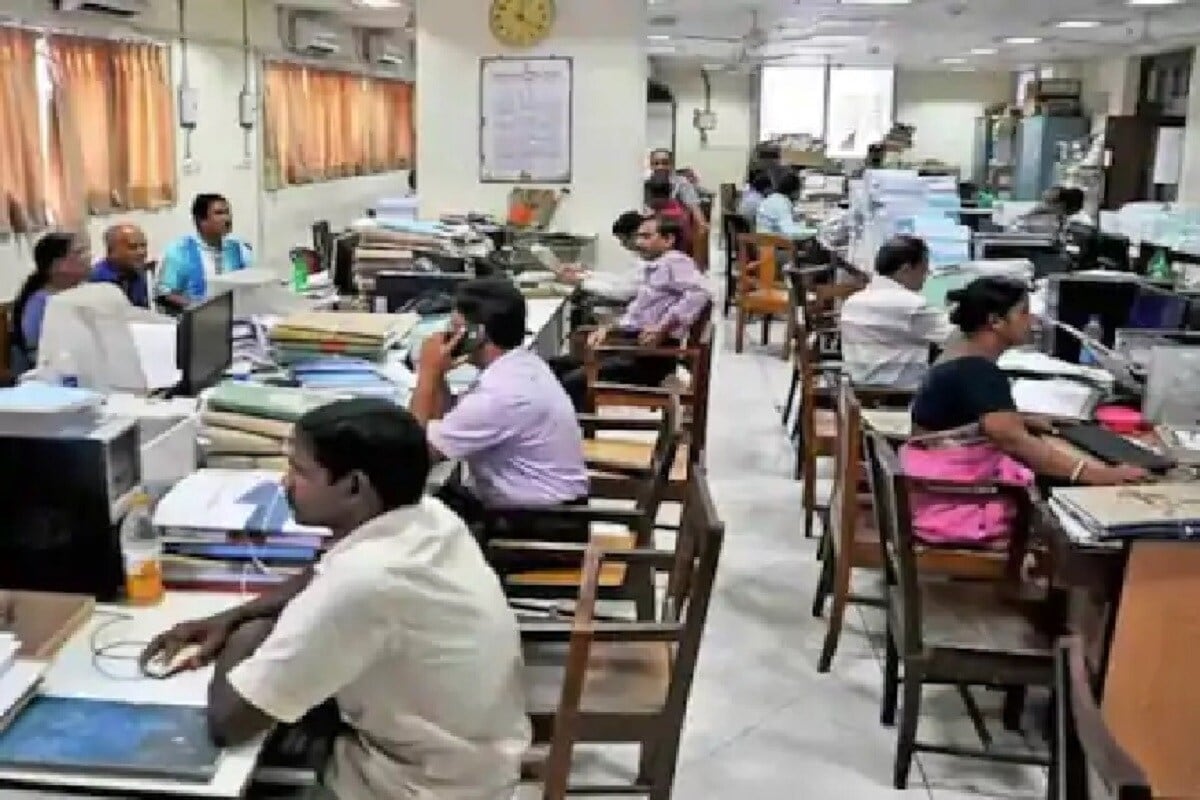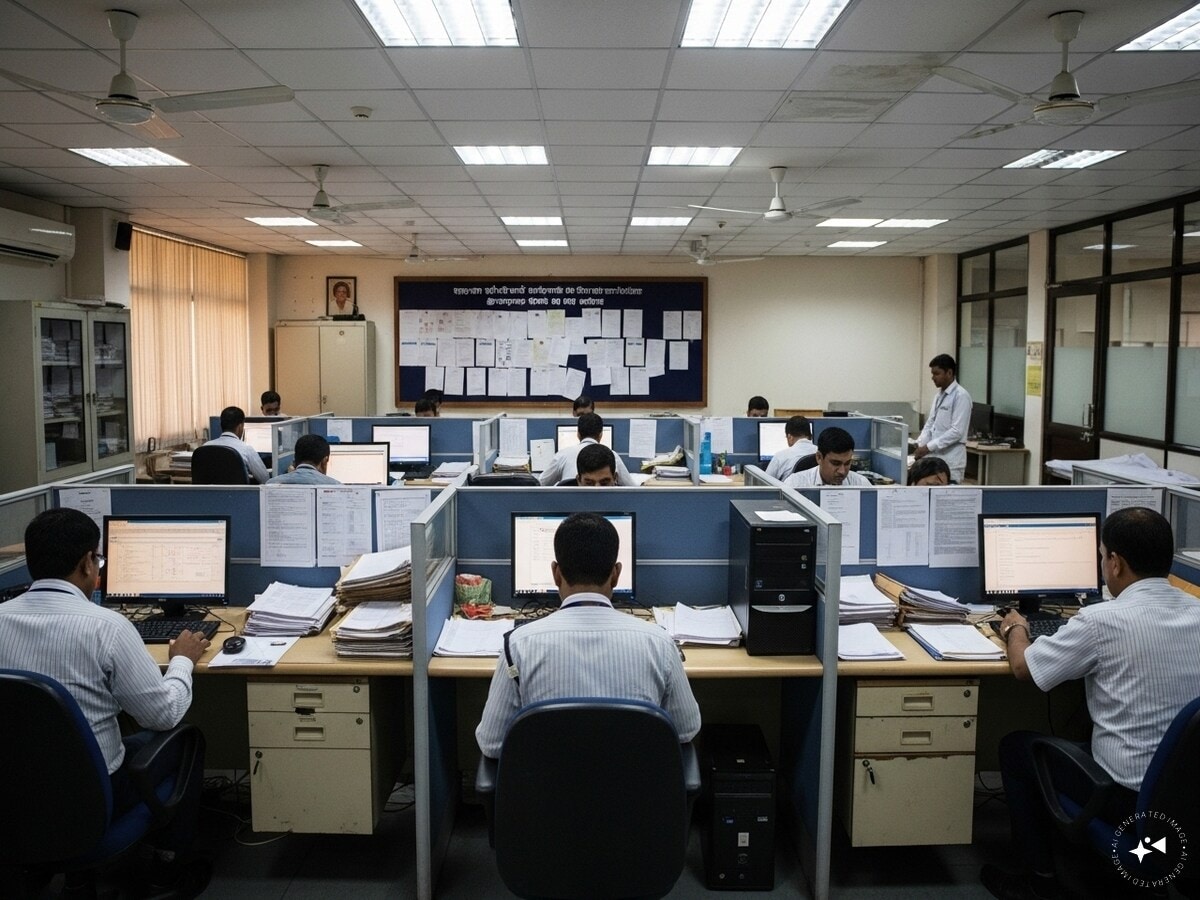Business
Urban Company IPO Listing Price Prediction: GMP Rises Above 41%, All You Need To Know

Last Updated:
Urban Company IPO Listing Price Prediction: Shares of Urban Company Ltd are expected to be listed at Rs 146 on the BSE and the NSE, as per its grey market premium.

Urban Company IPO Listing Price Prediction.
Urban Company IPO Listing Price Prediction: The Urban Company IPO witnessed its final day of bidding on Friday, September 12. The issue received over 108.98x subscription on the last day of bidding on Friday. Its grey market premium or GMP has also surged to 41.75%, compared with nearly 37% on the first day of bidding on Wednesday.
Urban Company IPO Listing Price Prediction
According to market observers, shares of Urban Company Ltd are expected to be listed at Rs 146 on the BSE and the NSE, as per its grey market premium. The GMP currently stands at Rs 43, which is nearly 41.75% over its IPO price of Rs 143, indicating a strong listing for the issue.
The GMP is based on market sentiments and keeps changing. ‘Grey market premium’ indicates investors’ readiness to pay more than the issue price.
Urban Company IPO Allotment Date & Listing Date
The IPO allotment will take place on September 15 (Monday), while its listing is scheduled to take place on September 17 on both the BSE and the NSE. Once the allotment is finalised on Monday, the IPO allotment can be checked on the websites of the BSE, the NSE and registrar Link Intime.
Urban Company IPO Price & Lot Size
The price band of the IPO has been fixed in the range of Rs 98 and Rs 103 per share. Its lot size has been fixed at 145 shares. It means that investors will have to apply for a minimum 145 shares and in multiple thereof.
Urban Company IPO Subscription Status So Far
On the final day of the three-day bidding, the issue received a 108.98x subscription, garnering bids for 11,06,88,64,130 shares as against the 10,15,65,534 shares on offer. The retail and NII participation stood at 41.49x and 77.82x, respectively. The QIB category was subscribed by 147.35x.
Urban Company IPO: Analysts’ Recommendations
Brokerages are divided on Urban Company’s upcoming IPO, with most recommending a subscription, though views vary on the time horizon and risk appetite.
Anand Rathi Shares & Stock Brokers has given a ‘subscribe for long-term’ tag, citing strong network effects and a trusted brand. “It is valuing at P/E of 65.7 times to its FY25 earnings with P/S of 12.9 times and market cap of Rs 14,789.5 crore. We believe that the IPO is fully priced and recommend a ‘subscribe for long term’ tag,” it said.
BP Equities and Sushil Finance are also positive, both giving a straight ‘subscribe’ rating. BP Equities said the company’s leadership, improving financials, and long growth runway make the IPO attractive for medium to long-term investors, while Sushil Finance called it an opportunity to participate in India’s dynamic gig economy.
ICICIDirect has taken a cautious stance with a ‘neutral’ rating, noting that while Urban Company is a unique player in the home services space, the IPO valuation of 11.4 times FY25 EV/Sales is “largely in line with other new age platform companies.” It said optimum use of its employee strength would aid operating leverage and long-term profitability.
Lakshmishree Investment & Securities was more cautious, recommending ‘subscribe with risk’. It said the valuation assumes continued high growth and margin expansion, leaving little room for a near-term re-rating. “Risk-tolerant investors seeking exposure to the rapidly growing home services sector [should] subscribe… but only with a long-term period,” it advised.
KR Choksey Finserv, on the other hand, has given a clear ‘subscribe’ call, highlighting that the company has serviced 14.6 million customers to date, with annual transacting users growing at a 17.3% CAGR. “We believe the company is well-positioned to capitalize on the growth driven by expanding consumer segments and shifting preferences towards higher spends on experiences,” it said.
Canara Bank Securities echoed this optimism with a ‘subscribe’ rating, pointing to Urban Company’s transformation into a profitable, cash-flow positive enterprise. “Its growth strategy is anchored in its India Consumer Services segment, with prudent international expansion and product diversification enhancing long-term potential,” it noted.
Ventura Securities also backed the issue with a ‘subscribe (risk)’ view, noting that Urban Company has turned profitable with a Q1FY26 profit of Rs 6.94 crore. “Its ability to innovate products and services… further strengthens its competitive positioning. However, these strengths are accompanied by notable risks,” it cautioned.
SBI Securities has recommended subscribing with a long-term view, citing strong revenue and NTV growth. “Profitability is on an improving trend and is expected to breakeven at the EBITDA level in FY26E,” it said.

Haris is Deputy News Editor (Business) at news18.com. He writes on various issues related to personal finance, markets, economy and companies. Having over a decade of experience in financial journalism, Haris h…Read More
Haris is Deputy News Editor (Business) at news18.com. He writes on various issues related to personal finance, markets, economy and companies. Having over a decade of experience in financial journalism, Haris h… Read More
September 12, 2025, 11:33 IST
Read More
Business
8th Pay Commission Update: What Government Employees Can Expect

The wait is finally over for over 1 crore central government employees and pensioners. The Union Cabinet, led by Prime Minister Narendra Modi, has officially approved the Terms of Reference (ToR) for the 8th Central Pay Commission (CPC). The Commission is expected to submit its recommendations within 18 months from the date of its formation. (Image: AI-Generated)

The Central Pay Commission is set up every few years to review and revise salary structures, retirement benefits, and service conditions. (Image: AI-Generated)

Historically, a new Pay Commission is implemented roughly every 10 years. (Image: AI-Generated)

The salary hike depends largely on the fitment factor, which is a multiplier used to calculate the revised basic pay. In the 7th Pay Commission, the fitment factor was 2.57, raising the minimum basic salary from Rs 6,000 to Rs 18,000. (Image: AI-Generated)

For the 8th Pay Commission, different fitment factors are being considered. Here’s how they could impact salaries: if the fitment factor is set at 1.83, the basic salary could rise from Rs 18,000 to around Rs 32,940. A slightly higher factor of 1.86 would increase it to Rs 33,480. However, if the government applies a more generous fitment factor of 2.47, the revised basic pay could reach Rs 44,460. These figures help illustrate how significantly the fitment factor influences salary revisions under the Pay Commission. (File Photo)

Gross salary includes Basic Pay, Dearness Allowance (DA) – linked to inflation, revised twice a year, and House Rent Allowance (HRA) – based on city category (30% for metro cities, 20% for Tier-2 cities, and 10% for Tier-3 cities). (Image: AI-Generated)

Let’s calculate the gross salary using a fitment factor of 2.47 and assuming: Basic Pay: Rs 44,460; DA: Rs 0 (for simplicity); HRA (30% for metro): Rs 13,338. The New Gross Salary = Basic Pay + DA + HRA, which is 44,460 + 0 + 13,338 = Rs 57,798. (Image: AI-Generated)
Business
Aadhaar Card Update: Is Aadhaar A Proof Of Date Of Birth Or Citizenship? Govt Issues Clarification

New Delhi: The Ministry of Communications has issued a latest circular on clarification on the Properties and Usage of Aadhaar by Unique Identification Authority of India (UIDAI).
The three-point clarification was issues regarding the properties and permissible usage of the Aadhaar number and related documents.
UIDAI said that an Aadhaar number may be used for establishing the identity of the Aadhaar number holder subject to authentication or offline verification.
Further, Aadhaar number or the authentication thereof, is not a proof of citizenship or domicile in respect of Aadhaar number holder.
UIDAI also added that Aadhaar number is not a proof of date of birth and hence, must not be used for establishing the date of birth of the Aadhaar number holder conclusively.
Business
Teachers to be balloted on industrial action over class contact time

Members of the NASUWT union are set to be balloted on industrial action over class contact time.
The union accused the Scottish Government of failing to meet the SNP manifesto commitment ahead of the 2021 election of reducing contact time by one-and-a-half hours per week.
Announcing the move, NASUWT national official for Scotland Mike Corbett said teachers are “arguably worse off in terms of workload” than before the last election.
“The commitment on class contact time was a recognition by the Scottish Government that additional time away from the classroom was necessary to give teachers sufficient time and space to plan, prepare and assess pupils’ work in order to help students achieve their best and raise attainment.
“Since 2024 we’ve had agreements to work ‘at pace’ and the establishment of working groups by the Scottish Government and Cosla to make meaningful progress on class contact time reduction.
“But the reality is that teachers today are arguably worse off in terms of their workloads and working hours than they were in 2021 when this commitment was first made.
“A reduction in class contact time is as needed now, if not more so, than in 2021.
“It is regrettable that we have been forced to declare a trade dispute and move to a ballot in order to try to force the Government to give teachers the working conditions it itself acknowledges they require to do the job effectively.”
The union’s general secretary Matt Wrack said it had “exhausted all avenues” to reduce contact time, adding: “Where ministers and employers continue to fail our teachers, we will stand up for their right to working conditions which would enable them to deliver the highest quality of learning for our children and young people.”
A Scottish Government spokesperson said: “Ministers have been clear that reducing class contact will help support the time and space necessary for teachers, to allow them to drive improvement and reform in our schools and improve outcomes for their pupils.
“We are committed to working with teaching unions and Cosla to agree our approach to delivering a reduction in class contact time at pace.
“That is why we are providing local authorities with increased funding of £186.5 million to restore teacher numbers – this additional funding was agreed to by local government on the understanding that they make ‘meaningful progress’ with reducing class contact.
“Ministers respect union members’ right to withdraw their labour, but are disappointed that the NASUWT has taken this action while these constructive discussions are ongoing.”
-

 Fashion1 week ago
Fashion1 week agoChinese woman charged over gold theft at Paris Natural History Museum
-

 Tech1 week ago
Tech1 week agoThis Smart Warming Mug Is Marked Down by $60
-

 Entertainment1 week ago
Entertainment1 week agoJohn Grisham unveils his first-ever mystery, “The Widow”
-

 Fashion1 week ago
Fashion1 week agoeBay UK seller fee removal sends revenue down but profits rise
-

 Tech1 week ago
Tech1 week agoEaster Island’s Moai Statues May Have Walked to Where They Now Stand
-

 Tech1 week ago
Tech1 week agoOpenAI has slipped shopping into ChatGPT users’ chats—here’s why that matters
-

 Tech1 week ago
Tech1 week agoAI model could boost robot intelligence via object recognition
-

 Fashion1 week ago
Fashion1 week agoThe North Face and Cecilie Bahnsen launch second collaboration






